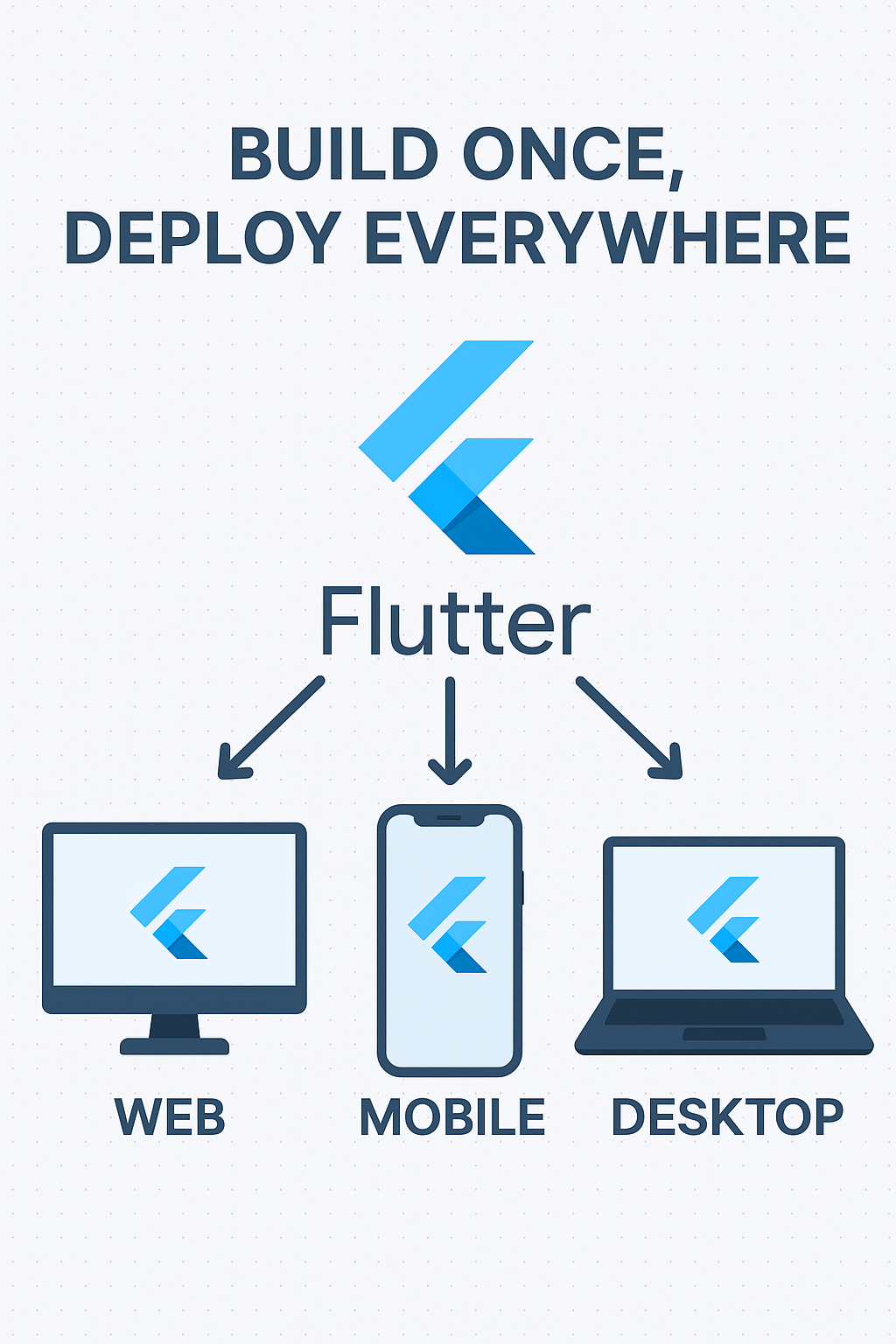
In today’s tech landscape, users expect apps to work everywhere — mobile phones, web browsers, desktops, and even tablets. Rewriting the same app for each platform is a massive waste of time and resources. Flutter offers a build once, run anywhere solution; Google’s UI toolkit lets you build once and deploy everywhere.
In this post, we’ll break down a practical Flutter Web, Mobile, and Desktop strategy that helps you maintain one codebase and launch your app across platforms without chaos.
Why Flutter for Multi-Platform Development?
Flutter allows you to:
- Use a single Dart codebase for iOS, Android, Web, macOS, Windows, and Linux
- Share UI and business logic
- Maintain platform-specific behavior with minimal branching
- Deliver native performance using Flutter’s rendering engine
This “build once, deploy everywhere” philosophy works if you plan it right — so let’s walk through how.
1. Start With a Scalable Project Structure
Set your project up for success from the start:
- Use
lib/src/for your feature modules - Keep
main.dartclean and delegate initialization - Create folders like
/features/,/core/,/shared/, and/platform/
💡 Tip: Use conditional imports and the universal_io package to abstract platform-specific code cleanly.
2. Responsive UI is Non-Negotiable
Different platforms mean different screen sizes.
Use:
LayoutBuilder(
builder: (context, constraints) {
if (constraints.maxWidth < 600) {
return MobileLayout();
} else if (constraints.maxWidth < 1200) {
return TabletLayout();
} else {
return DesktopLayout();
}
},
)
Or, use a library like flutter_screenutil or responsive_framework to simplify responsive layout logic. You can also check out our guide to creating responsive UI in Flutter for a deeper breakdown.
3. Platform-Specific Features: Use Conditional Logic
Sometimes you’ll need platform-specific behavior. Use:
if (kIsWeb) {
// Web-specific logic
} else if (Platform.isAndroid) {
// Android-specific logic
}
For deeper abstraction, create a PlatformService with platform-specific implementations using dart:io and conditional imports.
4. Routing: Handle Deep Links and URLs
Use packages like go_router or beamer to:
- Support named routes
- Handle web URLs and mobile deep links
- Maintain browser history for web apps
5. File Handling, Downloads, and Storage
Use cross-platform solutions where possible:
| Feature | Package Recommendation |
|---|---|
| File picker | file_picker |
| Local storage | hive or shared_preferences |
| Downloads | dio + path_provider |
| Image cache | cached_network_image |
Make sure to test each feature thoroughly across platforms!
6. Authentication Strategy Across Platforms
Use Firebase Auth or OAuth with packages like:
firebase_auth(works across web, mobile, and desktop)flutter_appauth(for advanced desktop flows)
Test sign-in flows thoroughly, especially web-based popups and redirects.
7. Build and Deploy Pipelines
Use CI/CD tools like:
- Codemagic – Flutter-focused pipelines
- GitHub Actions – Customizable and free for most needs
- Bitrise or GitLab CI – Full control for enterprise setups
Use flutter build targets:
flutter build apk # Android
flutter build ios # iOS
flutter build web # Web
flutter build macos # macOS
flutter build windows # Windows
Then deploy via:
- Web: Firebase Hosting, Vercel, Netlify
- Mobile: Play Store, App Store
- Desktop: GitHub Releases, Microsoft Store, DMG/EXE
8. Use Feature Flags to Control Platform-Specific Features
Don’t release half-baked features on certain platforms. Use flags:
const bool isDesktopOnlyFeatureEnabled = Platform.isMacOS || Platform.isWindows;
9. Testing Across Platforms
Use:
- Unit Tests for logic
- Widget Tests with
flutter_test
Automate cross-platform testing using tools like BrowserStack or Firebase Test Lab.
Conclusion
You can build once and deploy everywhere with Flutter — but it takes planning, responsive design, platform awareness, and strong project structure.
By following this Flutter Web, Mobile, and Desktop strategy, you’ll avoid duplication, reduce maintenance costs, and reach a broader audience without losing performance or user experience.



